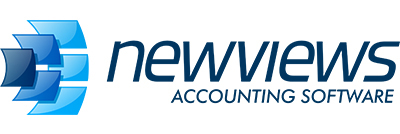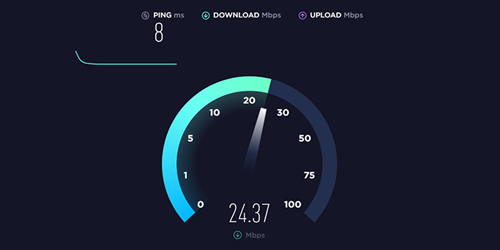Is Your Internet Connection Slowing You Down?
If you’re using NewViews as a multiuser system with remote or wireless access – either self-hosting your data or having us host it for you – you need a reliable internet connection with decent speed. This is because NewViews provides full functionality when accessed in the cloud (versus stripped down functionality that may be provided by other software applications).
So what speed is required for satisfactory performance of NewViews? In this article, we’ll show you how to test the speed of your internet connection and give you some idea of what your results might mean.
If you’re hosting your NewViews data on a NewViews server and providing remote access to users who are not in the same physical location as that server, or wireless access within the same location, you can determine the speed of your internet connection using a browser based speed test (e.g. https://www.speedtest.net/ or https://fast.com/).
Speed tests typically measure 3 things: download speed, upload speed and latency. An optimal internet connection will have high download and upload speeds and low latency.
- Download speed: How quickly data is transferred TO you (measured in megabits per second or Mbps)
- Upload speed: How quickly data is transferred FROM you (measured in megabits per second or Mbps)
- Latency: How quickly you receive a response from the server (measured in milliseconds or ms)
Minimum download and upload speeds for satisfactory performance when a NewViews server is accessed remotely are:
- Download speed: 25 Mbps
- Upload speed: 5 – 7.5 Mbps
In terms of latency, better performance generally corresponds to lower speeds. Rough guidelines are as follows:
- 1 – 10 ms is excellent
- 11 – 15 ms is very good
- 16 – 20 ms is good
- 21 – 25 ms is fair
- > 25 ms may or may not provide acceptable performance depending on the size of your books and/or the complexity of the operations you are performing
Important! The values provided above are only applicable to NewViews version 2.33.3 or later. Version 2.33.3 introduced significant enhancements to memory management that improve overall performance.
If you’re thinking of taking advantage of the NewViews Data Hosting service and would like to test the speed of your connection to our servers in Toronto, Ontario, click the link below. Enter guest for the user name and nv2018 for the password. Note that the number returned for “ping” is the latency value in ms.
Again, you are looking for numbers that correspond to the values provided above.
https://newviews.com/speedtest
If your office is located on the west coast of Canada and you would like to test the speed of your connection to our NewViews Servers in Vancouver, BC, contact us for assistance.
In addition to the native speed of your internet connection, several other factors can impact performance including:
- The number of people using the connection simultaneously. Let’s compare bandwidth to a sprinkler system; 1 sprinkler attached to 1 pipe will produce faster water flow than 10 sprinklers attached to that same pipe. If the pipe isn’t big to begin with, water flow could slow to a trickle.
- The number of devices connected to your network. If each employee has a desktop computer, a tablet and a smartphone using WiFi, those devices may be uploading or downloading data in the background. You may also have printers connected to the network that are transmitting print jobs. Each additional device that is active can be like having an additional person using up your bandwidth.
- Applications in use. Certain applications are bandwidth hogs, e.g. cloud-based apps, remote desktop sharing, voice over IP (VoIP) phone systems or video conferencing. Some of these apps may be installed on employee devices and sync automatically whenever the company’s file sharing apps are syncing. Downloading or uploading large files, like graphics files and videos, also takes more bandwidth than using email or surfing the web.
So what can you do if the speed of your internet connection is negatively impacting the performance of NewViews?
- If your NewViews workstations are in the same physical location as your NewViews Server but connect wirelessly, considering installing wired connections. Wired connections (e.g. ethernet cabling) are almost always significantly faster than wireless.
- If your NewViews workstations are not in the same physical location as your NewViews Server, or you connect/would like to connect to one of our NewViews Servers through our Data Hosting Service, contact your Internet Service Provider (ISP) to determine if they can upgrade your service to a higher tier. Note: Latency is a critical factor, so a higher tier service that just offers more bandwidth may or may not have an impact on remote performance. A combination of higher bandwidth AND lower latency is important.
- You may want to inquire about obtaining dedicated internet access with guaranteed bandwidth vs a shared connection. With shared connections, the actual speed is unpredictable and fluctuates throughout the day, depending on the ISP’s network traffic. With a dedicated connection, your download and upload speeds are always guaranteed.
For more information or to have one of our experts assist you with additional options for speeding up your internet performance, please don’t hesitate to contact us by phone or email.

